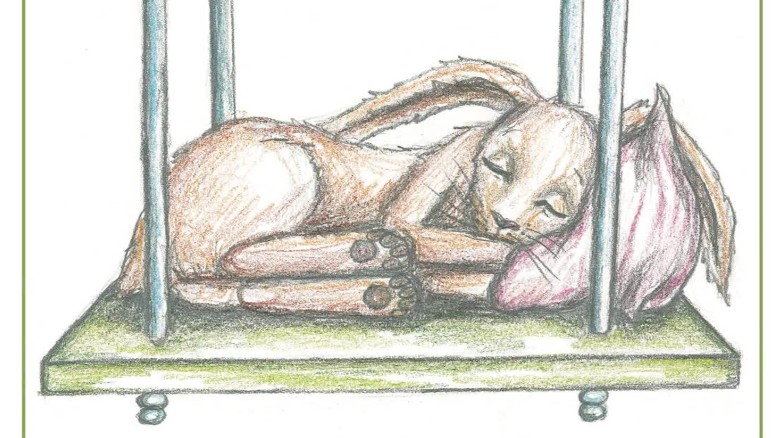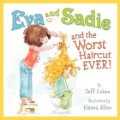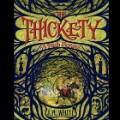Story highlights
- Children's book author claims, "I can make anyone fall asleep"
- The book uses relaxation and psychology to lure children to dreamland
(CNN)Bedtime is loathed by parents universally, a fact author Adam Mansbach capitalized on in his best-selling book "Go the F**k to Sleep".
Beyond commiserating, countless authors have tried to offer solutions. Margaret Wise Brown's "Goodnight Moon" and Sandra Boynton's "The Going To Bed Book" are two of the more popular for reading to kids. Parents who want to research solutions can read "Healthy Sleep Habits, Happy Child" by Dr. Marc Weissbluth and "Solve Your Child's Sleep Problems" by Dr. Richard Ferber to name a few of hundreds.
Now there's a new book that's allegedly guaranteed to put our children to sleep, and maybe even adults, too. "I can make anyone fall asleep," reads the cover of "The Rabbit who wants to fall asleep" by Swedish author, motivational speaker and behavioral scientist Carl-Johan Forss├®n Ehrlin. It's the story of a rabbit named Roger (pronounced Rooo geeer) who can't fall asleep, and the characters he encounters, such as the Heavy-eyed owl. Of course, Ehrlin promises they won't make it that far in this, his first book for children.
Is this the holy grail to end all sleep-time battles? Book publisher Penguin Random House certainly hopes so. It announced last month that it had acquired the previously self-published, best-selling book and released a new print edition, eBook and audiobook (which had been available free on Ehrlin's website) this week in the United States, United Kingdom and five other countries. It's also being culturally adapted and translated into more than 40 languages.
For those who want more, Ehrlin says he will be writing two more bedtime stories. He says he's heard from parents who say they love the book but are getting bored with it, so he'll be offering alternatives. Then he plans to move on to another major battle: potty training.
Ehrlin says all he wants is to help parents get their children to sleep. Skeptics say Ehrlin, and Penguin Random House, are preying on the vulnerability of exhausted parents.
How is it supposed to work?
Ehrlin says the book uses relaxation and psychological techniques to lure little ones to sleep. The words of the story were chosen carefully to make up an intentional language pattern. It seems to be working for many, according to parent groups on Twitter and Facebook. Some are calling it magic.
When a friend sent me a link to Ehrlin's website, I took the bait and bought it because, like so many parents, I am desperate to ease bedtime battles with my toddler. I practically stalked my mail carrier waiting for the book's arrival, and when it came I couldn't wait to get my kids ready for bed and start reading.
The first page offers detailed instructions to the reader, including a warning not to read it aloud near someone who is driving. It says to read italicized words with a slow, calm voice, and emphasize the bold words. It's also recommended that the child lie down and not look at the pictures. Throughout the wordy 10-page book there are places to insert yawns as well as the name of the child being read to. Sentences using the phrase "fall asleep now" appear frequently. The book also is deliberately long, with instructions to finish reading the book all the way through even after sleep is reached, to ensure children are beyond waking.
Ehrlin, who has become a father since he wrote the book in 2011, says the idea popped into his head one day while he was driving. His test market were his friends' children and a couple of preschool classrooms ready for nap time.
Kim West, a sleep coach better known as "The Sleep Lady," says it makes sense. She even admits thinking, "Why didn't I think of that?" when she first learned of the book. An author herself, she is also a licensed clinical social worker.
"The muscle relaxation exercise that is done with the owl is known to be helpful for children and adults," she says. Ehrlin's recommendation to use excess energy before reading the story "is a good sleep hygiene suggestion" and helps with a "soothing bedtime routine." Dr. Tanya Remer Altmann, a pediatrician and author of "Mommy Calls," agrees. "Relaxation and reading a nice story are things we often use to help kids get to sleep," she says.
But does it work?
Atlanta pre-kindergarten teacher Britton Pierce likens reading the book to relaxation exercises and yoga. The first time she read it to her students, "I had to get up and move so I wouldn't fall asleep," she says. She's read it to about six children so far and says it has been a success.
Unfortunately, I did not have the same experience with my 3-year-old daughter. She quickly lost interest in the book the first time through and protested future attempts. A few weeks later my husband read it to her and I got excited as her eyes grew heavy. I quietly left the room assuming she'd be asleep in no time, but after it was over she ran down the hall to her brother's room. On my last attempt she threw the book on the floor and proclaimed, "No don't read that book!"
It's far from a scientific poll, but in an effort to gather multiple experiences with this book, and hoping for success, we passed it around our office for parents to try at home. Of the eight children to whom we collectively read "The Rabbit who wants to fall asleep," the closest we came to achieving sleep from this book was a 7-year-old who read it to herself and reported she fell asleep soon after finishing it.
Ehrlin says it doesn't work for 100% of children. "Try your best and read it a few times so the kids feel comfortable with the book, and the parents, too."
For parents who do find magic in the pages of this book, West says, "Be careful not to create a pattern of laying down with your children and reading them to sleep. You don't want them to expect this every night, or during the night when they wake up and [want you to] read them back to sleep."
Ehrlin says that's not a problem. The goal is that the child learns to relax and go to sleep, even without the book. He hears from parents that their children don't need the book after a while. "I try to program the child to get rid of the book by saying [phrases like] 'Tomorrow you will fall asleep even faster.' "
As for skeptics and naysayers, Ehrlin says, "Everyone has an opinion I guess." And Altman adds that while "it's hard to guarantee anything when it comes to kids ... there are things parents can do to stack the cards in their favor."
If "The Rabbit who wants to fall asleep" fails to cure all your bedtime woes, West suggests more proven methods, such as stopping all screen time at least one hour before bedtime and creating a soothing consistent bedtime routine.
Share on CNN Parents Facebook: How do you get your kid to fall asleep?



















